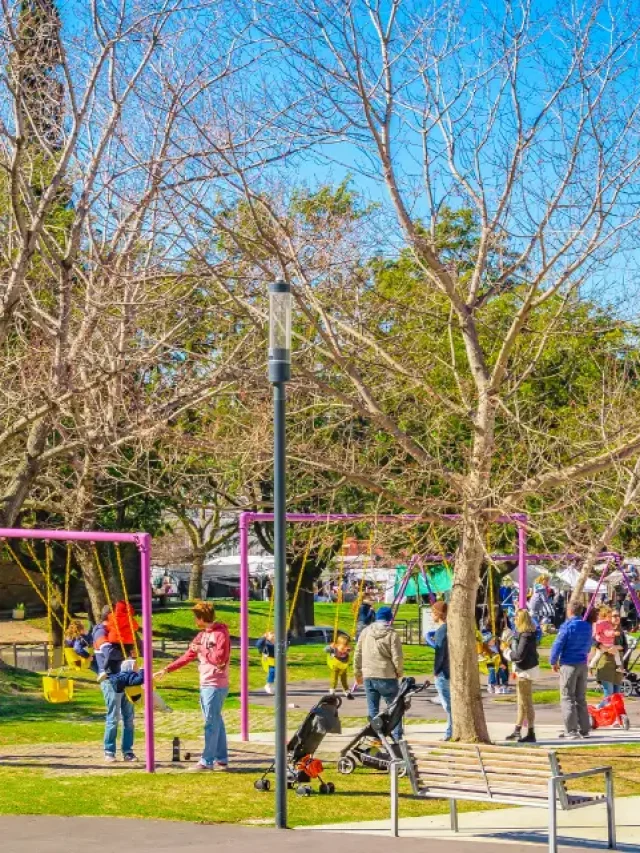Cost of Living in Philippines: The cost of living in the Philippines for international students in 2025 remains an important consideration for those planning to pursue their education in this Southeast Asian country. Known for its affordable lifestyle, the Philippines offers a blend of high-quality education, diverse cultural experiences, and budget-friendly options.
From tuition fees to housing, transportation, and daily expenses, the country provides an economical environment compared to other study destinations. This blog will give you all the information you need to stay on budget while enjoying your student life in Philippines. Let’s get started!
Table of contents
- What is the Cost of Living in Philippines?
- Rental Costs in Philippines
- Utility Costs in Philippines
- Food & Groceries Costs in Philippines
- Transportation Costs in Philippines
- Entertainment and Leisure Costs in Philippines
- Why Choose the Philippines?
- Cost of Living in Philippines Compared to Other Cities and Countries
- Factors That Influence the Cost of Living in the Philippines
- Tips for Managing Costs in Philippines
- FAQs on Cost of Living in Philippines
What is the Cost of Living in Philippines?
According to the Numbeo Website, the average cost of living in the Philippines for a single person is approximately PHP 31,395 per month, excluding rent, while rent typically ranges from PHP 9,000 to PHP 40,000, depending on location and lifestyle. For a family of four, monthly expenses are estimated at PHP 109,192.2 without rent. Costs can vary significantly based on factors such as housing, food, transportation, and utilities.
Rental Costs in Philippines
The cost of living in Philippines can vary significantly based on where you choose to live. Renting apartments in city center areas of the Philippines can be relatively expensive compared to those located outside the city. For instance, in Manila, the average monthly rent for a one-bedroom apartment in the city center ranges from PHP 17,200 to PHP 50,000, while outside the city center, it can start at around PHP 9,932.93. Despite these costs, housing rental prices in the Philippines are often more affordable than in many developed countries. Here’s a summary of average monthly rent costs:
| Apartment Type | Average Cost |
| Apartment (1 bedroom) in City Centre | PHP 17,531.42 |
| Apartment (1 bedroom) Outside of Centre | PHP 9,932.93 |
| Apartment (3 bedrooms) in City Centre | PHP 37,022.54 |
| Apartment (3 bedrooms) Outside of Centre | PHP 20,946.07 |
Utility Costs in Philippines
Utility costs in Philippines are affordable. For an 85m² apartment, basic utilities like electricity, water, heating, cooling, and garbage usually cost around PHP 6,104.81 per month. These costs can vary depending on your usage, but in general, they are much cheaper compared to many other countries. It’s an affordable way to enjoy essential services while living in Philippines. Below is the table showing the average utility bill:
| Utilities (Monthly) | Approc Cost |
| Basic (Electricity, Heating, Cooling, Water, Garbage) for 85m2 Apartment | PHP 6,104.81 |
| Mobile Phone Monthly Plan with Calls and 10GB+ Data | PHP 1,727.97 |
| Internet (60 Mbps or More, Unlimited Data, Cable/ADSL) | PHP 1,732.45 |
Food & Groceries Costs in Philippines
In Philippines, food costs vary based on where and what you eat. A simple meal at an inexpensive restaurant typically costs around PHP 234.39. If you’re dining at a mid-range restaurant, a three-course meal for two can cost around PHP 1,200. Overall, food in Philippines offers options for all budgets, from casual to more expensive meals.
However, cooking at home is a more affordable option that allows you to save money and enjoy healthy meals. To help you plan your grocery budget, we’ve provided a list of common grocery items and their prices in Philippines.
| Groceries Items | Approx Price in PHP |
| Milk (regular), (1 liter) | 101.43 |
| Loaf of Fresh White Bread (500g) | 71.68 |
| Rice (white), (1kg) | 53.70 |
| Eggs (regular) (12) | 117.33 |
| Local Cheese (1kg) | 436.96 |
| Chicken Fillets (1kg) | 246.13 |
| Apples (1kg) | 165.45 |
| Banana (1kg) | 82.31 |
| Oranges (1kg) | 151.41 |
| Tomato (1kg) | 91.59 |
| Potato (1kg) | 125.03 |
| Onion (1kg) | 144.89 |
| Lettuce (1 head) | 78.08 |
| Water (1.5 liter bottle) | 41.18 |
Also Read:
- Cost of Living in North Carolina: Updated Living Cost 2025
- Cost of Living in Nottingham: 2025 Updated Guide
Transportation Costs in Philippines
Getting around in Philippines is simple and affordable, which is a big part of the cost of living in Philippines. Whether you’re in the city or exploring the countryside, there are many transportation options that fit different budgets. Public buses are a cheap way to travel, while taxis offer a more comfortable choice. Even for longer trips, gasoline prices are reasonable, making it easy and cost-effective to get around the country. For your reference, we have given an overview of the cost of transportation in the Philippines.
| Mode of Transport | Average Cost |
| One-way Ticket (Local Transport) | PHP 15.00 |
| Monthly Pass (Regular Price) | PHP 600.00 |
| Taxi Start (Normal Tariff) | PHP 45.00 |
| Taxi 1km (Normal Tariff) | PHP 15.00 |
| Taxi 1hour Waiting (Normal Tariff) | PHP 150.00 |
| Gasoline (1 liter) | PHP 65.26 |
Entertainment and Leisure Costs in Philippines
In Philippines, entertainment and leisure activities come with various price tags, and these costs are an important part of the cost of living in Philippines. A monthly fitness club membership for one adult costs PHP 1,777.56, while renting a tennis court for an hour on the weekend is priced at PHP 300.96. These costs highlight the mix of affordable and premium options for those looking to enjoy leisure time in the country. Here is a table for reference:
| Items | Average Cost (PHP) |
| Fitness Club, Monthly Fee for 1 Adult | 1,777.56 |
| Tennis Court Rent (1 Hour on Weekend) | 300.96 |
| Cinema, International Release, 1 Seat | 350.00 |
| 1 Pair of Jeans (Levis 501 Or Similar) | 2,450.37 |
| 1 Summer Dress in a Chain Store (Zara, H&M, …) | 1,388.96 |
| 1 Pair of Nike Running Shoes (Mid-Range) | 3,973.89 |
Why Choose the Philippines?
The cost of living in the Philippines is a major reason why many international students choose to study here. It offers quality education and a rich cultural experience at an affordable price, making it easier for students to focus on their studies without worrying too much about money. Additionally, the friendly people, vibrant culture, and beautiful landscapes make living in the Philippines a great experience for students. Here are more reasons why the Philippines is an attractive destination for international students:
- High-Quality Education: Prestigious universities like the University of the Philippines, Ateneo de Manila University, and De La Salle University offer world-class education.
- Affordable Living: Living in Philippines is budget-friendly compared to Western countries, making it easier for students to manage their expenses.
- Diverse Student Community: Over 26,000 international students study in the Philippines, creating a rich and diverse cultural environment.
- Affordable Tuition Fees: Tuition fees are generally affordable, making education accessible to a wide range of students.
- Scholarship Opportunities: Scholarships such as the Robert S. McNamara Fellowships Program and K.C. Mahindra Scholarships are available to help students with their expenses.
Cost of Living in Philippines Compared to Other Cities and Countries
The cost of living in Philippines is generally more affordable compared to many other major metropolitan areas worldwide. To help you understand how budget-friendly it is, we’ve compared the cost of living in the Philippines with cities like those in the USA.
| Country Name | Average Cost of living | Comparison with Cost of Living in Philippines |
| Cost of Living in the USA | PHP 67890 | Higher than Philippines |
| Cost of Living in the UK | PHP 59859 | Higher than Philippines |
| Cost of Living in Australia | PHP 64095 | Higher than Philippines |
| Cost of living in Canada | PHP 61623 | Higher than Philippines |
| Cost of Living in Singapore | PHP 65246 | Higher than Philippines |
Factors That Influence the Cost of Living in the Philippines
The cost of living in the Philippines is relatively affordable compared to many Western countries, making it an attractive destination for students, digital nomads, and expatriates. However, actual monthly expenses can vary greatly based on personal lifestyle and location. Below are major factors that significantly influence the overall cost of living in the country:
- Accommodation – Costs vary based on city, location, and type of housing.
- Utilities & Internet – Monthly expenses depend on consumption and provider.
- Food & Groceries – Eating habits and choice between dining out or cooking affect costs.
- Transport – Public transport is affordable; private options increase expenses.
- Education – Tuition fees differ between public and private institutions.
- Healthcare – Public services are cheaper; private care and insurance cost more.
- Mobile & Data – Mobile plans vary depending on data usage and provider.
- Leisure – Entertainment, fitness, and social activities add to monthly spending.
- Personal Care – Clothing and toiletries depend on brand preferences and lifestyle.
Tips for Managing Costs in Philippines
For students, managing the cost of living in Philippines requires careful planning and budgeting. By making smart choices in areas like accommodation, food, and transportation, students can keep their expenses under control while enjoying a fulfilling experience. It’s important to track your spending, look for discounts, and take advantage of student deals to ensure that living in the Philippines remains affordable. Here are some practical tips to help you manage the cost of living in Philippines:
- Choose Affordable Accommodation: Opt for shared apartments or dormitories to save on rent. Look for accommodations outside major cities like Manila for lower prices.
- Cook Your Own Meals: Eating out can be expensive. Cooking at home or eating at local food markets can help keep food costs low.
- Use Public Transport: Public transportation such as jeepneys, buses, and the MRT is cheap and efficient. Avoid taxis or ride-sharing apps for everyday travel.
- Shop Smart: Buy groceries from local markets or budget-friendly supermarkets instead of imported stores to save money on food.
- Take Advantage of Student Discounts: Many places offer discounts for students. Always carry your student ID to avail of these offers.
- Set a Monthly Budget: Track your income and expenses to ensure you stay within your monthly budget. Avoid unnecessary purchases to help manage your finances better.
- Find Part-Time Work: Many international students work part-time to cover living costs. Look for student-friendly jobs or internships that offer flexible hours.
- Avoid Expensive Areas: Stay away from tourist spots where prices tend to be higher. Explore local areas for better deals on everything from shopping to entertainment.
In conclusion, the cost of living in the Philippines is quite affordable, especially when compared to many other countries. While expenses vary by location and lifestyle, essentials like food, transportation, and housing are generally cheaper. However, urban areas like Manila can be more expensive. Overall, it’s possible to live comfortably with a reasonable budget in most parts of the country.
We hope you enjoyed reading our blog on the cost of living in Philippines. For a stress-free stay during your study abroad adventure, choose Fly Homes. Call 1800572118 to reserve your ideal student accommodation abroad with ease.
FAQs on Cost of Living in Philippines
According to the Numbeo Website, the average cost of living in the Philippines for a single person is approximately PHP 31,395 per month, excluding rent.
Living in the Philippines is more expensive than in India, with the cost of living being about 48.4% higher. However, it is still affordable compared to many Western countries, especially if you manage your budget and choose more affordable areas outside major cities.
Factors that affect the cost of living in the Philippines include location (city or rural area), lifestyle (luxury vs. budget), accommodation choice, and spending habits. Cities like Manila and Cebu are more expensive compared to smaller towns or rural areas.
Yes, international students in the Philippines are often allowed to work part-time while studying. This helps them cover living expenses and gain valuable work experience. Part-time jobs are available on campuses or in various industries.
The cost of living in the Philippines is generally lower than in countries like Singapore and Malaysia. However, it may be slightly higher than in other Southeast Asian countries, depending on the location and lifestyle.
A one-bedroom apartment outside the city center in the Philippines typically costs around PHP 9,932.93 per month. This cost is significantly lower than renting in major metropolitan areas.
Yes, it is possible to live on a low budget in the Philippines by choosing affordable accommodation, cooking meals at home, using public transport, and shopping at local markets. Many expats and locals successfully manage to live on a budget.
Yes, many establishments in the Philippines offer discounts for students, such as on transportation, meals, and entertainment. It’s advisable to carry a student ID to avail of these benefits.
The average cost of living for a family of four in the Philippines is approximately PHP 109,192.2 per month, excluding rent. This includes expenses for food, utilities, transportation, and other daily necessities.
The Philippines offers a range of transportation options, including public buses, jeepneys, taxis, and the MRT. Public buses are the most affordable, with a one-way ticket costing PHP 15, while taxis offer a more comfortable option at a higher cost.
Follow Us on Social Media




























